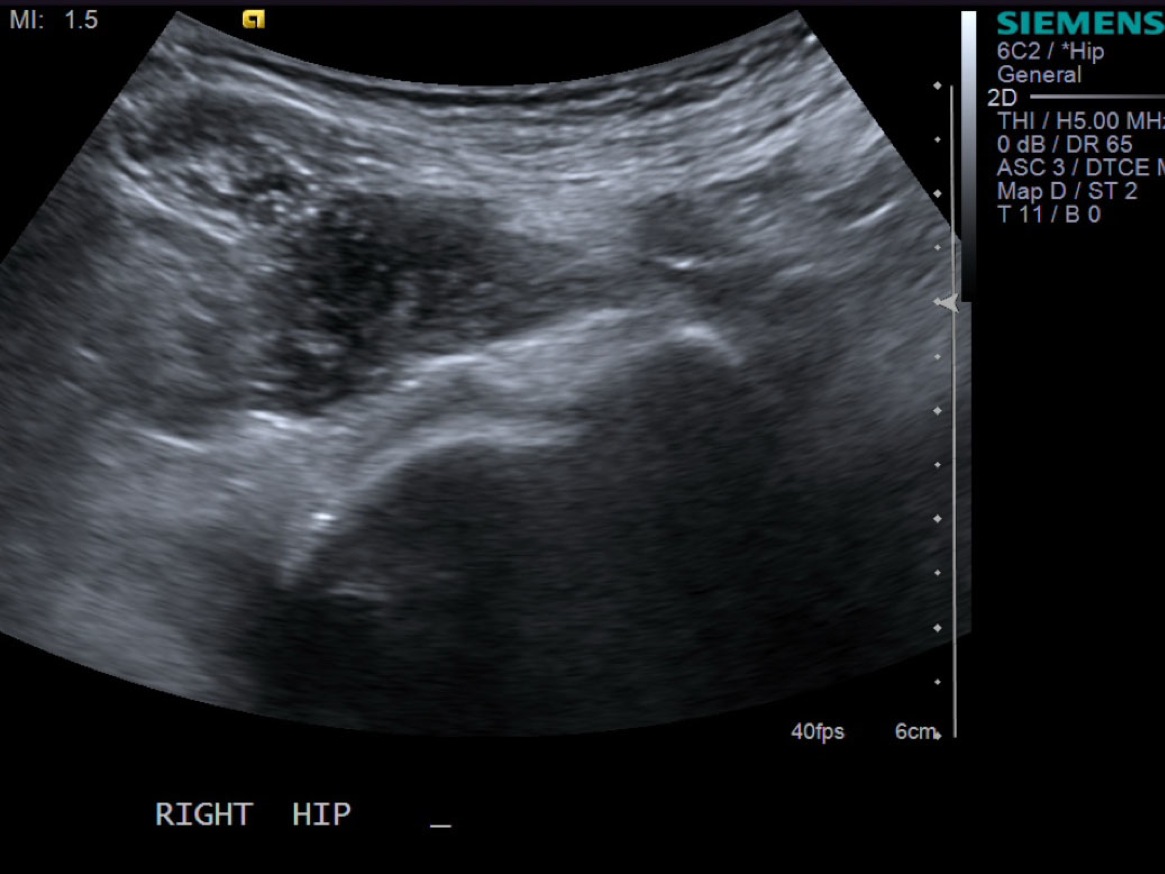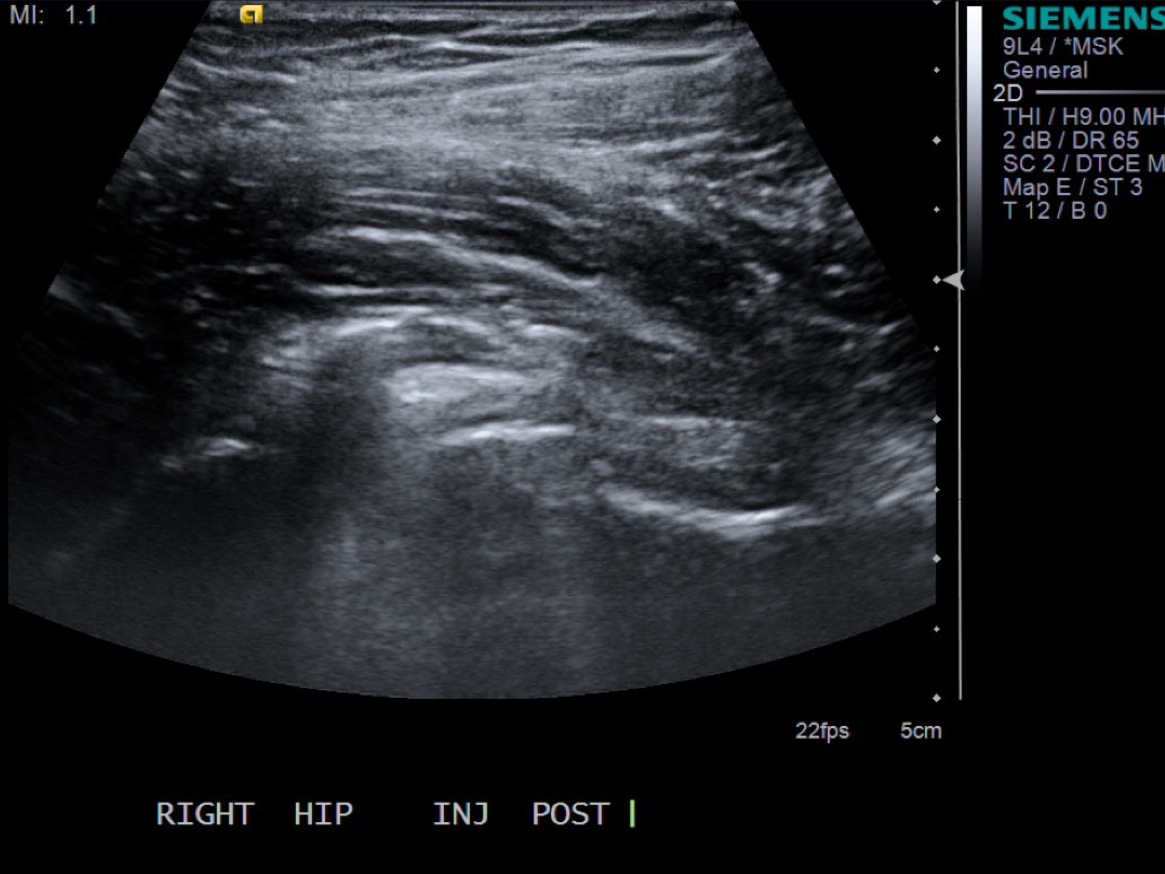Iliopsoas Tendon Sheath Injection
Equipment and Medications
|
|

Equipment 
Medications |
Procedure Instructions:
| Instructions | |
| 1. Standard pre procedure workup (consent, indications, contraindications, allergies). | |
| 2.Position patient supine. | |
| 3.Scan transverse. The iliopsoas tendon inserts on the lesser trochanter. If there’s an iliopsoas bursa filled with fluid, can aspirate/inject that fluid or do a peritendinous injection for tendinosis. Approach laterally. | Transverse/short axis view of iliopsoas tendon |
| 4. Mark probe location and probable injection site. | |
| 5. Prep patient; betadine or chlorhexidine x 3. Clear wide area. | |
| 6. Place sterile drape and probe cover. | |
| 7. Place sterile ultrasound probe on skin and find site of injection again and inject 1% lidocaine superficially with 1.5" 25g needle. | |
| 8. Exchange 25g needle for 22g spinal needle. | |
| 9.Advance needle with ultrasound guidance from lateral to the adjacent to the liopsoas tendon (deep to the femoral vessels and superficial to the capsule). | |
| 10. Test inject to see if easy flow with 1% lidocaine. If no resistance and see distention of the tendon sheath, exchange for 5cc syringe with injectable steroid and ropivacaine. | |
| 11.Pull needle out, wash skin with alcohol and place bandage on skin. | |
| 12. Scan joint to demonstrate distention. Can try to flex hip to see if fluid distended. | |
| 13. Ask level of pain on scale of 1-10 to see if improved.
|
References
- Placeholder
- Placeholder







